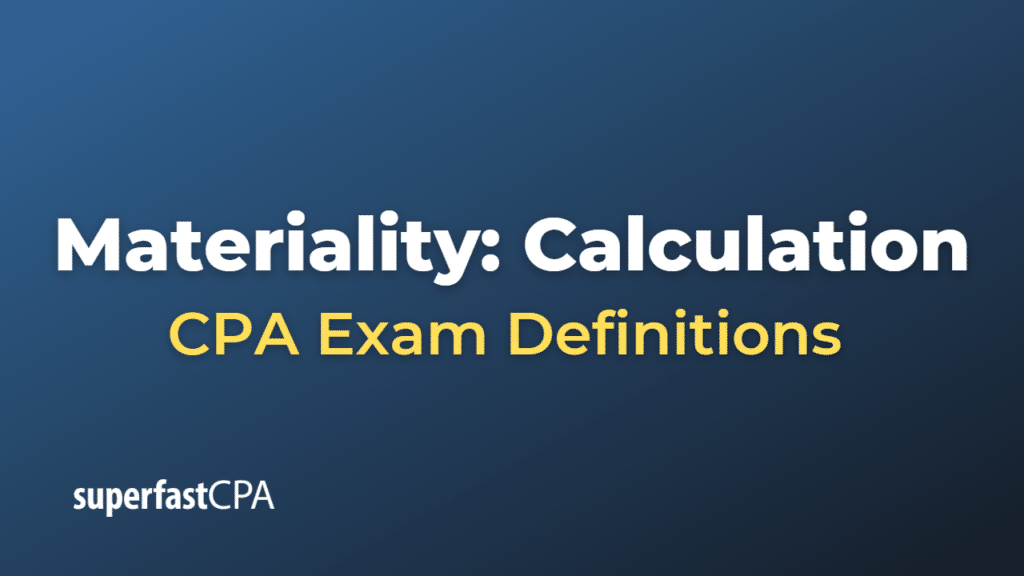Materiality: Calculation
An auditor calculates materiality for an entity’s financial statements as a whole using a combination of quantitative and qualitative factors. The process typically involves the following steps:
- Choose an appropriate benchmark: Select a financial statement benchmark that is relevant to the entity and its financial statement users. Common benchmarks include total assets, total revenues, net income, and equity. The choice of benchmark may depend on the industry, the entity’s size, its financial stability, and other factors.
- Determine a percentage: Decide on a percentage to be applied to the chosen benchmark. The percentage will vary based on the auditor’s professional judgment, the entity’s specific circumstances, and the needs of financial statement users. For example, auditors may use a lower percentage for entities with higher risk profiles or greater public interest. Common percentage ranges used for materiality calculations include 0.5% to 2% of total assets, 0.5% to 5% of total revenues, or 5% to 10% of net income or equity.
- Calculate the preliminary materiality: Multiply the chosen benchmark by the selected percentage to calculate the preliminary materiality. This figure represents the threshold for misstatements that could reasonably be expected to influence the economic decisions of users made based on the financial statements.
- Consider qualitative factors: In addition to the preliminary materiality calculated using quantitative factors, consider qualitative factors that may impact materiality judgments. Qualitative factors include the nature of misstatements, the impact on compliance with regulations or loan covenants, the influence on key financial ratios, the presence of fraud, and other circumstances unique to the entity.
- Adjust materiality, if necessary: Based on the qualitative factors considered, the auditor may decide to adjust the preliminary materiality to better align with the specific circumstances of the entity and the needs of financial statement users. This may involve increasing or decreasing the materiality threshold.
- Assess materiality throughout the audit: The auditor should continually reassess materiality during the audit as new information becomes available or the entity’s circumstances change. Materiality may need to be revised to reflect updated financial information or changes in the entity’s risk profile.
The materiality calculation for an entity’s financial statements as a whole serves as a guide for auditors in planning and performing audit procedures, as well as evaluating the impact of identified misstatements. It is essential for auditors to exercise professional judgment and consider both quantitative and qualitative factors when determining materiality for an audit engagement.













